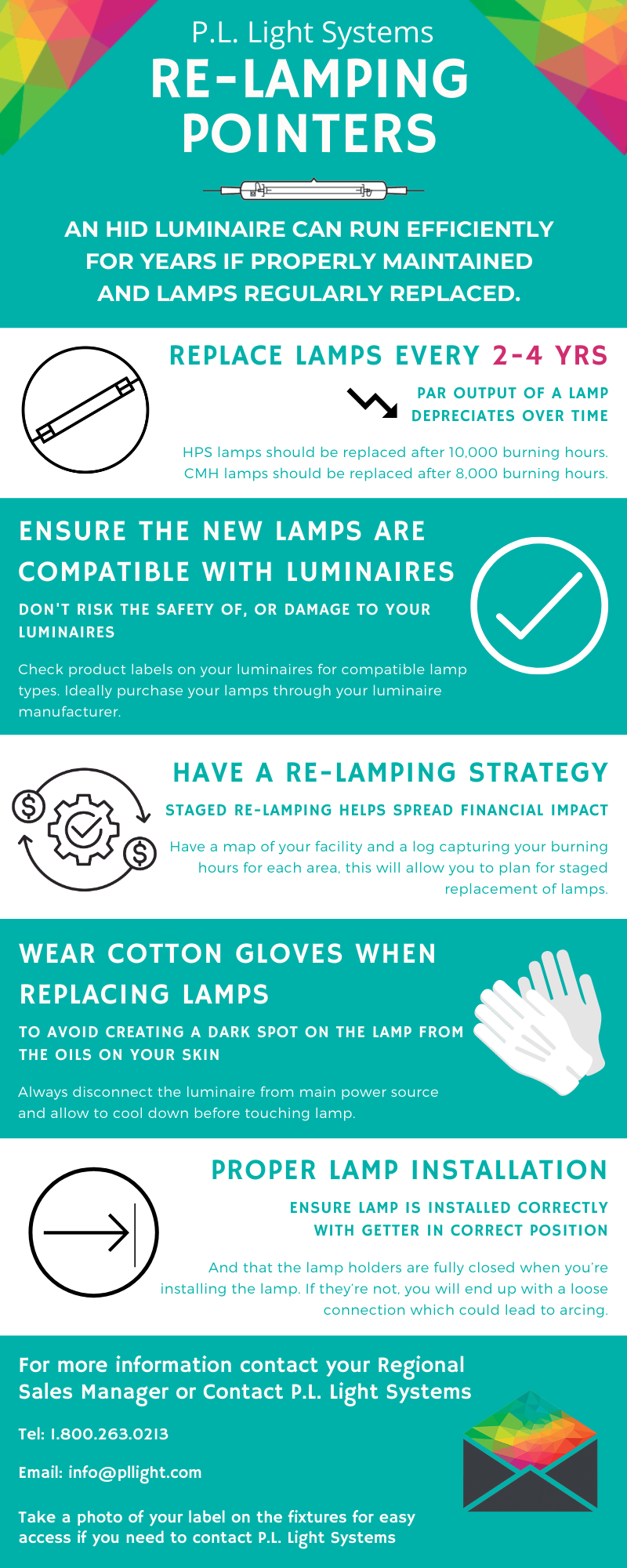When was the last time you checked the output of your lamps? Since light output depreciates over time, regular replacement of lamps is a critical component to maintaining the optimal performance of HID luminaires, and yet many growers do not include re-lamping as part of their regular maintenance strategy.
When it comes to light intensity, the rule of thumb is that every 1% increase in PAR light, results in 1% more photosynthesis, crop growth and yield. However, the opposite is also true: every 1% loss of light can mean a 1% loss in plant growth and this can have a significant impact on your crop and yield, so don’t wait for your lamps to fail before replacing them.
For high pressure sodium lamps, replacement is recommended after 10,000 hours of operation. Some lamp failure may occur before this recommended interval and single lamp replacement should be considered where necessary. Ceramic Metal Halide lamps can depreciate in output much quicker than HPS lamps – group re-lamping is typically recommended after 8,000 hours of operation.
We typically recommend greenhouse growers begin thinking about re-lamping over the spring and early summer months, so they can order the lamps and have them installed before the fall when they will be turning their luminaires back on again. Given that high-quality double-ended lamps are not inexpensive―replacing all the lamps in a facility at the same time could prove to be a pretty costly exercise. For this reason, we also coach growers on how to plan a well thought out re-lamping schedule, to spread the financial impact while ensuring optimal light intensity is maintained.



